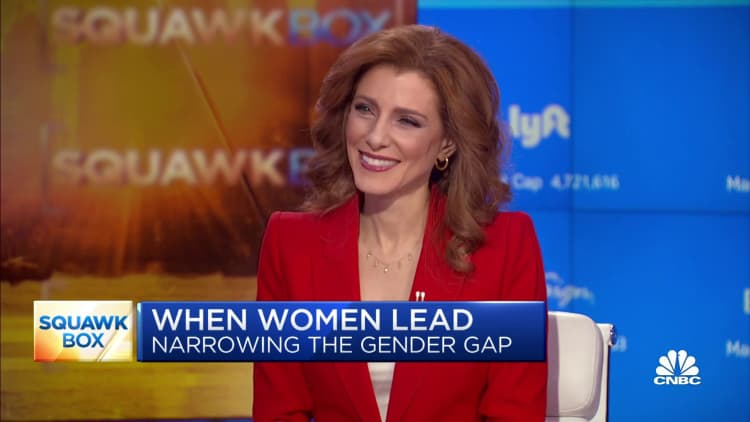At the peak of the pandemic, the data started to come in on all the women leaving the workforce and there were some shocking numbers related to the exodus — decades of gains made in female labor force participation were being wiped out by Covid.
New data shows that women who remain in the workforce are switching jobs at a furious pace, especially higher up in organizations, as some of the changes related to Covid result in a "Great Breakup."
In 2021, women leaders left their companies at the highest rate seen in years, according to McKinsey & Company and LeanIn.org's recently released 2022 "Women in the Workplace" report.
"I think that many companies have made big statements about wanting to get equal representation or better representation across different demographics in their senior leadership," Carolyn Childers, co-founder and CEO of female executive networking company Chief, told CNBC's Julia Boorstin at the CNBC Work Summit on Tuesday. "I hope that all of those companies are really thinking through what that means from a remote work perspective … because many women, many people of color are the people who are most wanting some of those changes that happened over the pandemic to sustain," Childers said.

Women are significantly underrepresented in executive positions, making departures an even greater blow to diversity efforts. In 2017, 20% of women held C-suite positions. Five years later, the number has risen by six percentage points, according to the McKinsey/LeanIn.org report, and of that 26% of women in executive positions, only 5% were women of color.
While these numbers represents a gradual rise, women in leadership and executive recruiting experts have described the rate of progress as a "failure."
"It has to be just so intentional," Childers said. "It has to be something that is measured, that is monitored and not just around hiring people, but what does inclusivity look like when you have people in the company, in the team."
Companies as a whole need to do more work to emphasize gender equality within the workplace and create a talent pipeline starting at the rank-and-file which is designed to provide women with opportunities to move up.
Many women are finding that this intention isn't there, as women continue to be more likely to experience microaggressions and overwork themselves for little to no reward, even at the executive level.
And they're heading to companies with more flexible work-at-home policies.
Forty-nine percent of women leaders say that flexibility is key when deciding whether to stay or leave their job, while only 34% of male leaders feel similarly, according to "Women in the Workplace."
"Just the way of working has changed considerably, where the office and the people that you work with were so much of your nucleus, of community, where it really helped to overcome a feeling of loneliness and other things. As more and more companies are embracing hybrid or remote first, there's new ways that you need to build those communities," Childers said.
Creating a membership network for women business leaders three years ago, Chief now has over 20,000 members and focuses not only on driving women toward senior executive positions, but also keeping them there. Through creating "core groups," networks of 10 individuals that meet monthly with an executive coach, Chief provides women leaders with a community to discuss their biggest professional and personal challenges.
"It creates support but also normalizes the challenges that so many women in the workplace face," Childers said.
Chief has found that since joining, 80% of its members feel more supported in the work that they're doing, 70% feel more confident in their work and 50% have even seen changes in compensation or job.
With a waitlist of almost 60,000 women, many of whom are based outside of the U.S., Chief recently announced its first international effort in the U.K.
"It's truly our goal to create the most powerful network of women, to be able to create that support for a huge population in the workforce that is very vulnerable right now and hope that companies really step forward and create the right polices, support and sponsorship for women to get that support that they need," Childers said.
If companies continue on the trend, they're going to lose more than just their current leaders — they're also likely to deter the next generation of women leaders, according to the "Women in the Workplace" report.





